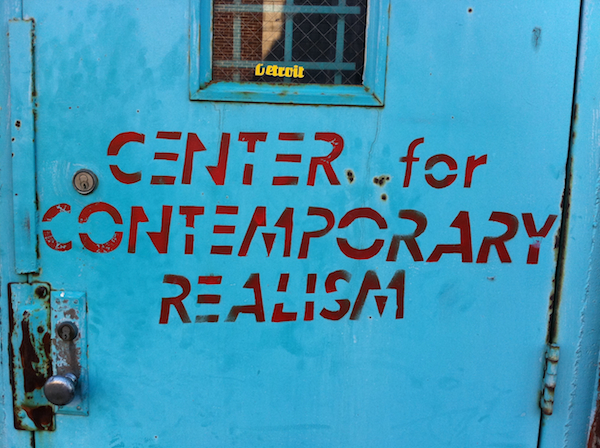We need to ask: Is gentrification happening in Detroit?
Gentrification has been a hot-button concern in cities around the world for decades. As neighborhoods change, as investments increase, we aim to begin a healthy dialog about what it means for Detroit. Scholar Meagan Elliott dives in as we get ready for our speaker series event.

I get asked this question all the time, and my answer is never as straightforward or satisfying as the person asking might hope. Some of those who ask are interested in economic development, and see the investment of middle-class individuals and families as the harbinger of a regional about-face. Some of those who ask are interested in social justice and see gentrification as another way of displacing Detroit’s low-income residents, both physically and emotionally from their homes and communities. Others don’t even see the topic as relevant, and tell me that there is an interminable list of issues to address in Detroit before we can begin to think about gentrification.
Sociologists have been revising the definition of gentrification since Ruth Glass invented the word a half-century ago. While no one can agree on the details, the meaning matters less than the mechanisms of neighborhood change that it seeks to characterize. At a minimum, gentrification implies a more affluent group of residents moving into a low-income area to take advantage of reduced rents. Ultimately, these new inhabitants have the cumulative effect of changing the cultural landscape, making home improvements, opening up businesses, and engaging in neighborhood boosterism that eventually yields a rise in real estate value. And in the most detrimental cases, this prices out the very neighbors who were living there to begin with; neighbors who may have been working hard to make their own home and neighborhood improvements, but without the same effects.
Many of us are familiar with the stories of gentrification as they ripple across the neighborhoods of Brooklyn or the Bay Area, pushing renters further away from their daily social networks, their jobs (formal and informal), or their sense of community. But in Detroit, gentrification takes a mutant form. It is compounded by the idea of a whole city on the cusp of change rather than just one neighborhood. It forces us to seriously question the difference between the availability of homes (of which we have plenty) and housing affordability within strong communities (of which there is a whole lot less). And because newcomers are mostly White, gentrification in Detroit picks at the abscesses of racial segregation in our city, which is currently the fourth most segregated in the country, and stirs the kinds of conversations like we saw in the Huffington Post a few weeks ago, in Model D and on WDET. All of which is summarized here.
This summer, development savant Tony Goldman came to Detroit full of ideas for reinvigorating the city, encouraging us all to “get back to the idea of an unsettled America that drew people to the West during the gold rush — and use that idea to energize Detroit with artists.” It is unclear whether this quote is directly from Goldman himself, or the diction of the Crain’s columnist who wrote about him. In fact, who said it isn’t even important. The narrative it evokes has an emotive past, and had been used to describe Detroit long before Goldman came to visit. Words like “pioneer” are often the synonyms for the first gentrifiers to move into a community, and this article, along with innumerable others, alerts us that Detroit is a place for these unencumbered urban pioneers to pull up their bootstraps in the face of tall weeds and even taller crime rates and finally save the city.
In part, this momentum is actually helpful. If a city hopes to attract new populations, create jobs, counteract the perpetual dwindling of the tax base, and generate the kinds of spaces that people want to live in, rhetoric like this helps because it radiates with opportunity. And Detroit is a space of tremendous opportunity. Every day I see things happening in Detroit that simply couldn’t happen anywhere else.
But coverage on Detroit that emphasizes urban-pioneering, “unsettled America,” and the salvation of the city also has tremendously negative consequences. It brings to the surface America’s erasure of the Native American population, pairing that colonial project with modern-day gentrification. This is the language that severely impairs any of the work that the recently established Truth and Reconciliation Commission seeks to carry out. If we want to be an inspired site, a place that encourages the kinds of opportunity I just mentioned, it won’t be with the rhetoric of Manifest Destiny.
In talking about Detroit as unsettled frontier, we have effectively removed anyone living in marginalized, underfunded, or neglected neighborhoods from the conversation. Gentrification does not have to mean displacement and the preference of a new middle class over struggling current residents. Gentrification can mean the infusion of the neighborhood with new businesses, new residents, and money that can be put to good use in a city that needs it and for residents that want it. Gentrification should mean neighborhood change in keeping with the vision of the WHOLE community, sincerely deliberated. But no matter what it ends up meaning in Detroit, it is not an amorphous, unavoidable process disconnected from our actions and speech.
For all of these reasons, the conversations about gentrification in Detroit ought to begin now, in accessible public forums, and continually. And they shouldn’t just be conversations. They should be responsible steps taken by community organizations ahead of time to guarantee that the negative outcomes of gentrification don’t take place. Rather than relying on only government regulations that require a percentage of rentals to be affordable (an important step but not hardly enough), create a revolving fund where all neighborhood businesses chip in to keep certain housing affordable, or work with affordable housing organizations that are trying to maintain the fabric and character of what makes this city so unique while also allowing everyone to appreciate it.
Detroit has the possibility to carve out a new definition for what gentrification means. But only if we take it seriously now.
Meagan Elliott is in the University of Michigan’s Ph.D program in sociology and in the Masters program in urban and regional planning.




